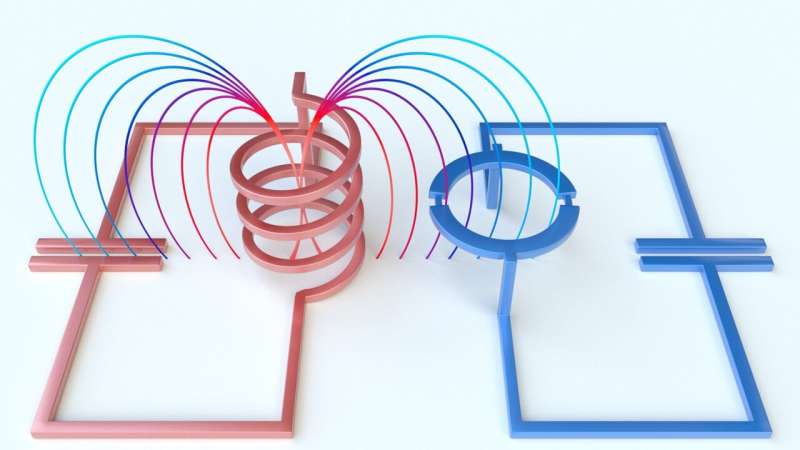Cooling radio waves to their quantum ground state

Researchers at Delft University of Technology have found a new way to cool radio waves all the way down to their quantum ground state. To do so, they used circuits that employ an analog of the so-called laser cooling technique that is frequently used to cool atomic samples. The device used a recently developed technique the researchers call photon pressure coupling, which is predicted to be of use in detecting ultra-weak magnetic resonance (MRI) signals or for quantum-sensing applications that can help the search for dark matter. The results have been published in Science Advances.
The radio waves we usually encounter in our daily lives, such as those that we listen to in our car or those that send signals to our baby monitors in our house, are hot: they contain noise that comes from the random motion of the atoms in the things they are emitted from and even in the antenna you are using to listen to them. This is one of the reasons why you hear static when you tune the radio in your car to a frequency that has no radio station.
Cooling waves
One way to reduce this noise is to cool down the radio waves, for example by cooling the antenna that receives them to near absolute zero temperature. The atoms in the antenna will no longer be jiggling around as much, and the noise will be reduced. This is actually what is done in a superconducting quantum computer, which is cooled to 10 mK to prevent these jiggling atoms from creating noise in the GHz signals that they work with.
"However," says Ines Rodrigues, a researcher at TU Delft, "some applications, such as NMR, dark matter detection or radio astronomy, are interested in ultra-weak signals at MHz frequencies." For these signals, cooling to 10 mK is not enough. Even at these extremely low temperatures, the random motion of atoms in a device or antenna is enough to add noise to a radio wave signal. In order to get rid of the left-over noise, it is essential to cool down the radio waves even further. But how?
Coupling photons
In this work, the Delft researchers have found a new way to counteract the noise of the jiggling atoms. Using circuits that employ an analog of the laser cooling technique that is often used to cool atom clouds, the authors cooled the radio wave signals in their device all the way down to the quantum ground state. "The dominant noise left over in the circuit is only due to quantum fluctuations, the noise that comes from the strange quantum jumps predicted by quantum mechanics," says group leader Gary Steele of TU Delft. Steele's group specializes in quantum sensing using superconducting quantum circuits.
The device made use of a recently developed technique the authors call photon pressure coupling. This method is predicted to have exciting applications in detecting ultra-weak magnetic resonance (MRI) signals; it could be utilized for many quantum information processing applications involving the rapidly evolving field of quantum computation. Furthermore, it could be used in so-called quantum sensing applications and could aid the search for dark matter, a strange type of as-yet undetected particles that could explain open questions in gravity and cosmology.
More information: I. C. Rodrigues et al, Cooling photon-pressure circuits into the quantum regime, Science Advances (2021). DOI: 10.1126/sciadv.abg6653. www.science.org/doi/10.1126/sciadv.abg6653
Journal information: Science Advances
Provided by Delft University of Technology





















